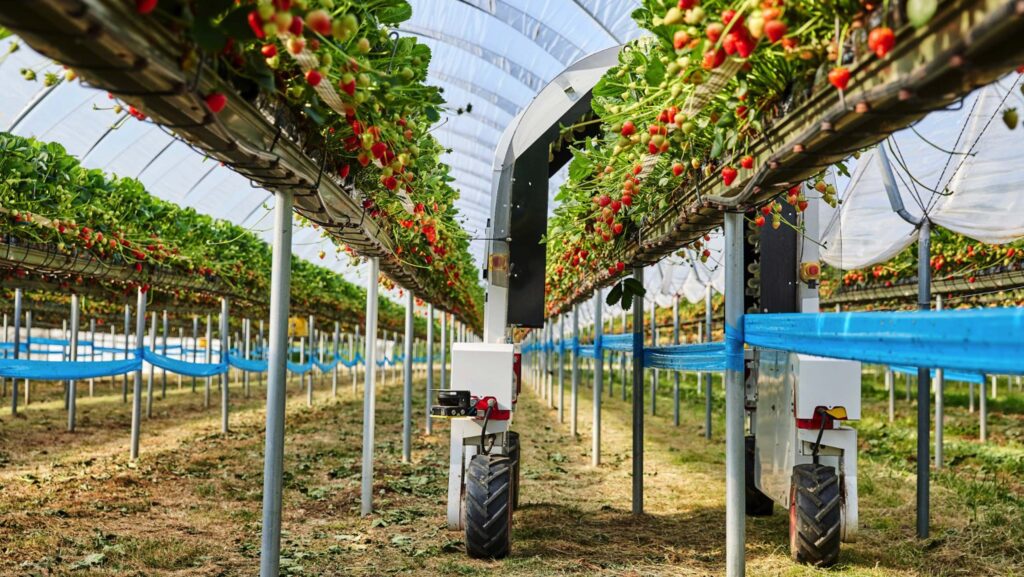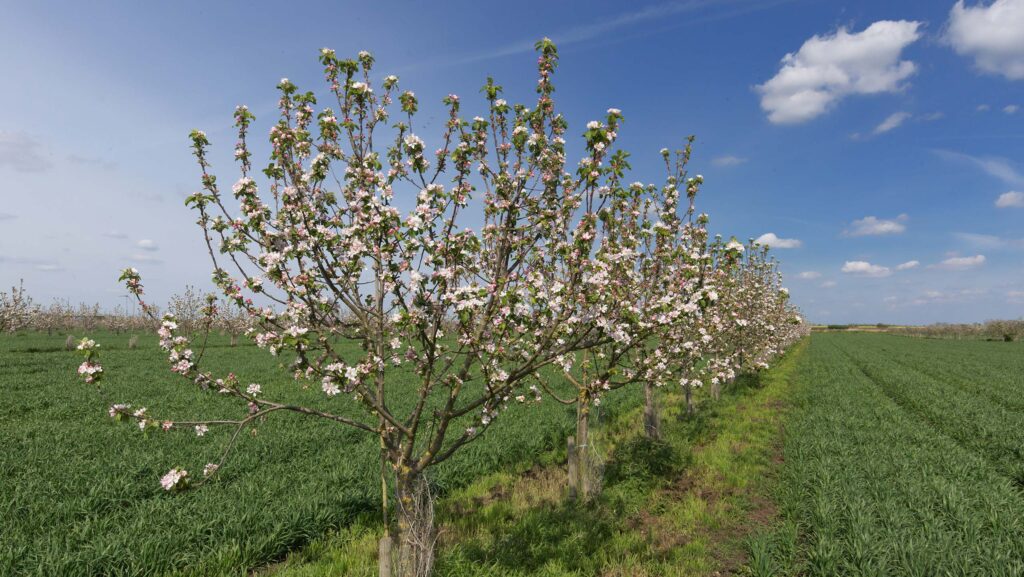Why agri-tech and nature have a place on the farm of the future
 © University of Lincoln
© University of Lincoln Innovative approaches and technical solutions sat alongside nature-friendly practices as the industry looked for potential ways to tackle the industry’s multiple challenges at Rase’s Farm of the Future event.
Delivered by Innovation for Agriculture and held at the University of Lincoln’s mixed farm at Riseholme, the day showed how integrating productive farming with environmental delivery – all within a landscape approach – is key to farming’s future.
From the use of robotics and AI to methods of carbon capture, remote monitoring and natural flood management, the overall vision was for a more resilient, sustainable and efficient farming system which meets wider societal needs.
See also: Olly Harrison sows OSR and cover crop with quadcopter drone
That means swarms of robots carrying out precise and targeted field operations are just as relevant as nature-based solutions that deliver ecosystem services and society benefits, summarised Professor Simon Pearson, director of the Lincoln Institute of Agri Food Technology.
“When we consider what the farm of the future is likely to look like, the reality is that it will be a much more diverse system than we’ve ever had before.”
He believes there will be a real mix of very new technologies and very old practices, put together in a way that addresses the production of food with the provision of public goods.
Emissions measurement
A carbon flux tower situated in a field that grew spring barley in 2024 was measuring how long the growing crop was capturing carbon for, as well as the amount of carbon dioxide being emitted.
With the supply chain intent on bringing greenhouse gas emissions down, the flux tower has a role in showing how the management of the crop can impact its carbon footprint, said Georgina Barratt, applied crop scientist at the British Beet Research Organisation.
“A crop that has a long growing season, such as sugar beet, is capturing carbon for a longer time than spring barley, for example,” she remarked.
“It means that it’s possible for a high-input, very productive crop to have a good carbon balance, contrary to some opinion.”
Elsewhere on the university farm, bolus monitoring technology being used in the pedigree herd of Lincoln Reds is helping farm manager Matt Bagley with his “prevention rather than cure” strategy.
He receives daily information on rumination, temperature, water intake and movement on each cow – as well as when they are on heat – giving him an early warning of any health issues and helping to get the cows in calf.
“It has minimised the need for vet visits and antibiotics use,” he said.
“The bolus, complete with sim card, stays within the cow’s reticulum for five years and its accuracy has been spot on.”
There is a cost associated with the Smaxtec system, he added. “After the one-off setup cost, its £3 per cow per month.
“On this farm, we’ve seen improved health, welfare and reproduction from its use, as well as being able to make better use of genetics.”

© Tim Scrivener
Agroforestry
Having rows of trees and arable crops growing together in a 12ha field has raised productivity and had a positive effect on nitrogen-use efficiency, said agroforestry expert and farmer, Stephen Briggs.
The farm’s agroforestry enterprise was established in 2018, when eight rows of a four-way mix of native trees for timber were planted, with 24m alleys between them.
“Agroforestry makes the farm bigger by going 3-D,” he said.
“Both the trees and the crop harvest sunlight, which means the space above and below the ground is being used in a different way.”
Stacking and layering production systems in this way has other benefits, he added.
“These range from biodiversity improvements and protection from climate extremes, to better soil health and reduced pollution. The trees help to capture any excess nitrogen before it is lost to water.”
The 3m strips that the trees are in represent just 8% of the land area, he stressed. “The remaining 92% is still growing crop, as before.”
Natural flood mangement
Practical techniques which help to slow the flow or retain water longer in the landscape were being displayed at Riseholme, where a 5ha demonstration site was established five years ago.
Situated on an important aquifer of the River Witham, the site is being used to show how water peaks can be reduced and delayed, giving areas downstream more time to prepare for floods.
Various techniques have been used. Having created offline ponds linked to the river by shallow channels, more water is stored on the floodplain, while in-channel barriers or “leaky dams” hold back water and divert it to the floodplain.
“These dams encourage the water to flow outwards and move slowly,” explained Matt Parr, a geomorphologist at the Environment Agency.
“This is not about putting horse jumps of logs in the river – it is better to use bundles of willow and alder, which will move slightly with the water as they slow it but will also regenerate.”
Water flow connectivity has been influenced by having let the area regenerate naturally, he added.
“Rough vegetation also helps to slow the travel of water and allows it to soak into the soil. Elsewhere, gravel has been added to put meanders back.”
Wetland and floodplain actions in the latest Sustainable Farming Incentive offer, which can be worth £1,200/ha, will help farmers make decisions about marginal and poorly drained land, said Matt.
“Any natural flood management project has to work for the farmer concerned and they can be tailored to need.
“There are multiple benefits apart from reducing the risk of flooding – from sediment management to habitat creation, better water quality and ground water connectivity.”
Robotics
Robotic systems that can carry out some of the tasks previously done by people are the focus of work being done by Professor Simon Parsons and his team at the Lincoln Centre for Autonomous Systems.
Much of the research has been done on fruit harvesting due to the labour challenges that the industry has experienced, he revealed.
Already, robots can do 70% of the picking and handling involved in glasshouse production, where they play an increasing role in logistics.
“Of course, they have to be able to work with people too,” Simon said.
Weed recognition is another area of interest as green-on-green spraying systems are developed.
“Detecting weeds in sugar beet is already possible and we are very close to recognition of blackgrass in wheat crops.
“As we move away from using pesticides, the detection and recognition of plants becomes a key component of any management system, as does precision application.”

